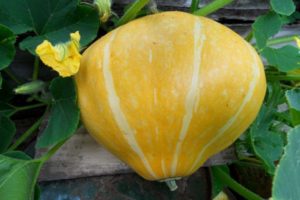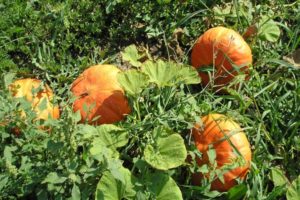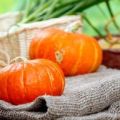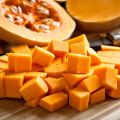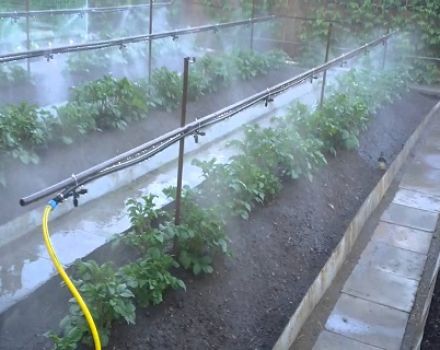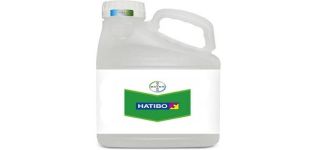Description of gymnospermous pumpkin variety, its characteristics and cultivation
The gymnospermous pumpkin appeared as a result of the labors of American breeders. The plant is demanding for warmth and moisture. The garden culture is distinguished by a powerful root system and a hollow stem, which is able to reach a length of 12 meters and form branched whips. The green mass of one bush is capable of reaching a volume of 5 m³. During the growing season of 3 summer months, the plant is able to grow and occupy an area of 30 to 32 m².
Description of the variety Golosemyanka:
- ripening time from 105 to 111 days;
- the length of the shoots reaches 5 meters;
- flattened fruits;
- the average weight of vegetables is from 3 to 4 kg;
- the average yield from one bush is from 9 to 12 kg.
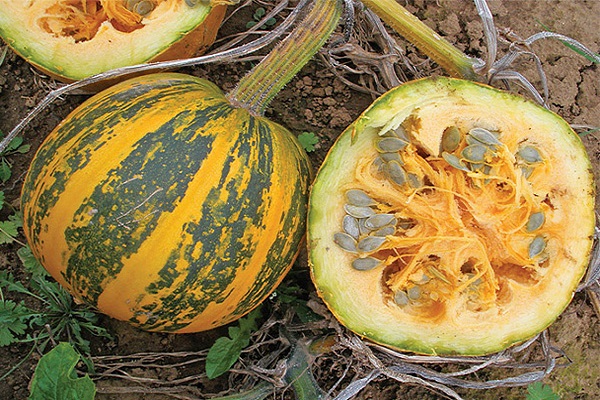
Pumpkin Golosemyanka during the growing season is capable of forming about 400 male and 80 female flowers. At the age of 20-30 days, the plant is able to form the first flowers. The fruits are large, but not comparable to that of a regular pumpkin. The nutritional qualities of most pumpkin varieties differ little from traditional types, since initially their selection of gymnosperms was aimed at obtaining the maximum amount of oil from the seeds.
What fruits does the plant produce?
The hard-bored Golsemyanka pumpkin has a rounded shape and a yellow peel with dull green stripes. The skin, despite its small thickness, is durable. The average weight of pumpkin fruits is 5 to 8 kg. Some specimens grow up to 16 kg.
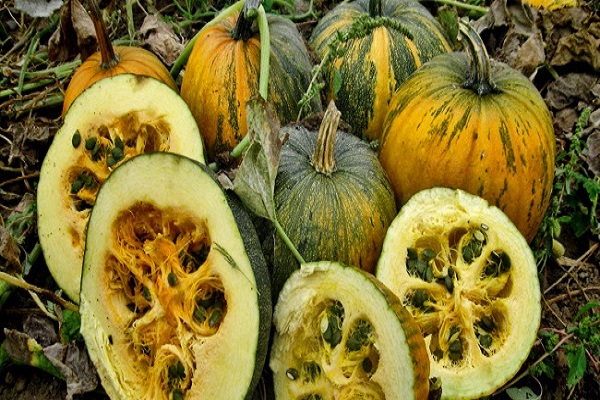
The palatability of gymnosperms depends largely on the variety. If you want to get sweet fruits, it is recommended to turn to the following types:
- Apricot pumpkin.
- Pumpkin Belarusian.
These gymnosperms contain 5 to 8% sugar. From these types of varieties, you can prepare mashed potatoes, juices, fillings for flour products, an additive to cereals. The value of most varieties does not lie in the nutritional value of the pulp, but in the large number of seeds. They are used fresh and fried. Ground pumpkin seeds can be used to add rich flavor and aroma to baked goods and pastries. Ground flour is used as a seasoning for salads and sauces.
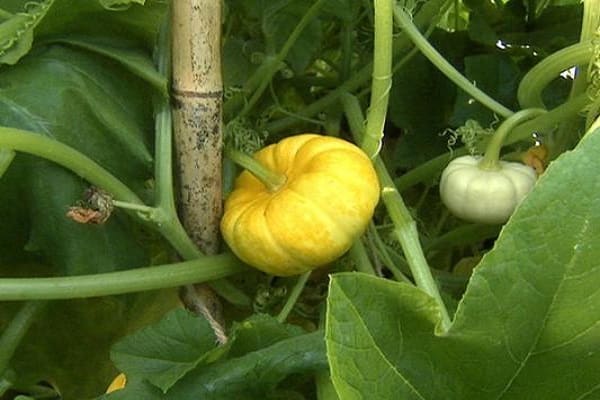
Pumpkin fruits contain a large amount of antioxidants, therefore they are used in the manufacture of anti-aging agents. With 55% oil content in vegetable pulp, gymnosperms are used as raw material. The value for humans lies in the balanced content of fatty acids and the rich composition of nutrients. Vegetables are used in the medical industry to make medicines.
Features of working with planting material
The pumpkin planting material needs preliminary processing. For this, the seeds are heated at a temperature of 40 ° C for 8 hours, after which they are soaked in a growth stimulant solution for 12 hours. For these purposes, the following drugs are suitable:
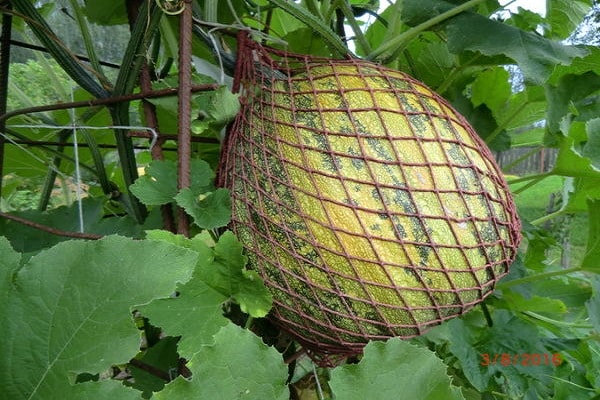
- Mycephitis.
- Pennant.
- Vermiculite.
Sowing operations begin when there is no risk of frost return. It is worth considering that due to the lack of a protective shell in the pumpkin seed, even a slight temperature drop negatively affects the plant and the seedlings may die. When grown through seedlings, the planting time is calculated so that from the moment of emergence to transplanting into open ground, it takes from 3 to 4 weeks.
The second telltale sign is that the shoots reach a height of 15 to 22 cm or the presence of two true leaves.
The gymnosperm variety belongs to heat-loving plants; therefore, for cultivation, it is necessary to have a heated, protected from gusts of wind place, giving preference to the southern slopes. The following soil requirements are met:
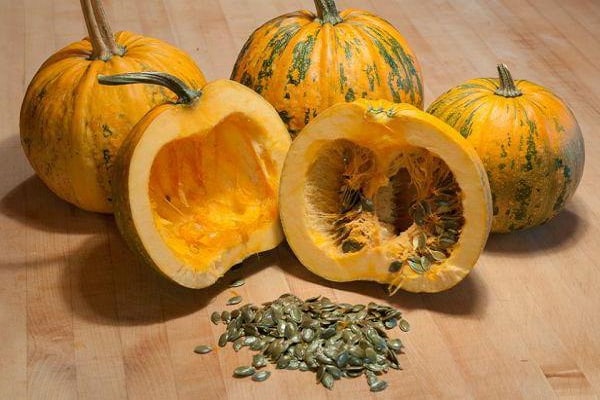
- oxygen-rich, easily aerated;
- containing a large amount of organic matter;
- not having low acidity, pH ranging from 6.5 to 7.5;
- fortified with nutrients.
The best precursors for pumpkin are potatoes, cabbage crops, onions, beets, and spicy greens. It is recommended to re-plant the variety in the same area after 4 years. Failure to comply with this recommendation is fraught with an increased risk of diseases and pests of pumpkins. The optimum time for planting is considered to be when the soil reaches a temperature of 15 ° C.
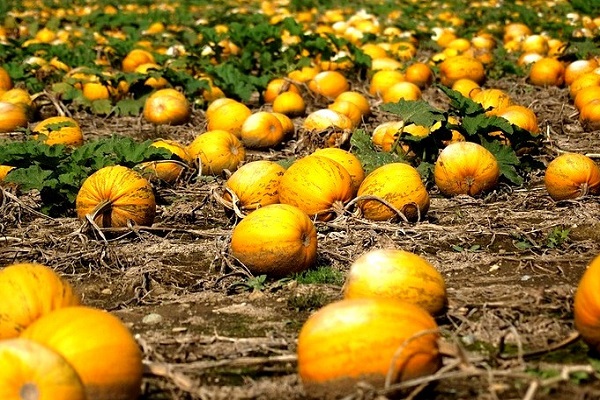
Landing scheme characteristic:
- the diameter of the hole is 30-40 cm;
- the immersion depth of the seeds should be no more than 6 cm;
- the recommended planting of bush species is 70x70 cm, medium-leaved - 70x140 cm.
Each well is spilled with 2 liters of water before planting. The place is abundantly fertilized with humus, a small amount of superphosphate, potassium, ash. From 3 to 4 pumpkin seeds are placed in the hole and the strongest shoots are left after the entrances. The first shoots appear on the 5-8th day. Shoots do not tolerate a lack of moisture, so the plant must be provided with regular watering. The appearance of the first male flowers is observed on the 25-30th day, after which female inflorescences are formed within a week. From this point on, the first fruits can be expected.
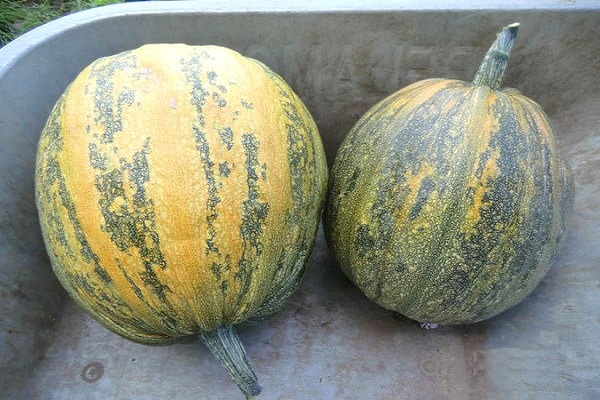
Growing recommendations
When growing gymnosperms pumpkin, in order to obtain good yield indicators, the plant must be provided with regular feeding. The first introduction of nutrients into the soil is carried out 7 days after planting. To do this, you can prepare the following tools:
- diluted chicken droppings in a ratio of 1:20;
- cow dung in a ratio of 1:10;
- infusion on the basis of weeds in a ratio of 1: 5.
In parallel, special preparations are additionally added, which are used for feeding weekly. The most popular are:
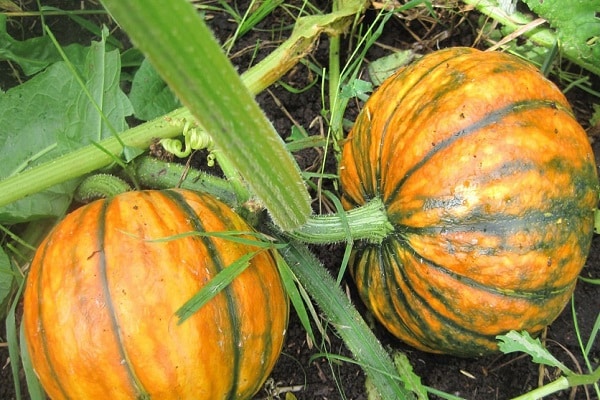
- Azofoska.
- Potassium sulfate.
- Uniflor-micro.
Additionally, it is required to add a mineral complex to the soil during flowering and during the fruiting period. When growing, the side shoots need to be pinched. When forming root shoots in place of nodes, they must be sprinkled with soil. To exclude the contact of the fruits with the ground, it is required to put cardboard, linoleum or other material to prevent rotting of the crop.
The greatest risk for melons is the following type of diseases:
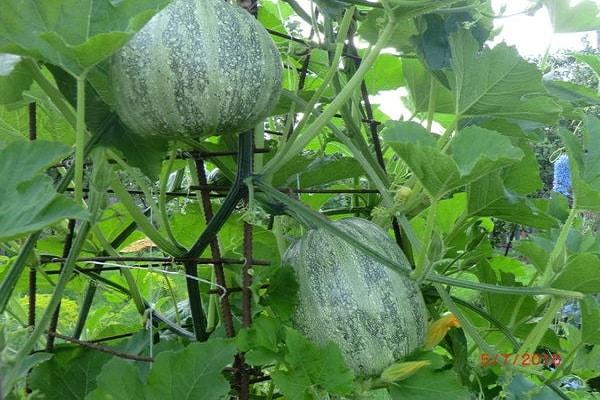
- powdery mildew;
- fruit rot;
- wireworms;
- aphid.
Disease prevention measures are associated with liming the soil, autumn plowing technology, timeliness of weeding and compliance with the rules of crop rotation.Watering the plant needs abundant, moisture to obtain a high yield should vary within 70%.
During the period of fruit ripening, it is required to pinch the shoots, which will allow the plant to optimally distribute nutrients.
Drying of the stalk and shoot, as well as a change in the color of the pumpkin to a characteristic color, is considered a sign of a finished fruit. It is necessary to harvest before the first frost. On average, vegetables can be stored for 2 months without losing their taste and appearance. In the future, the seeds begin to germinate, and the product becomes unsuitable as food or planting material. The optimal storage conditions are considered to be a room humidity of 75% and a temperature regime of 13 to 15 ° C.
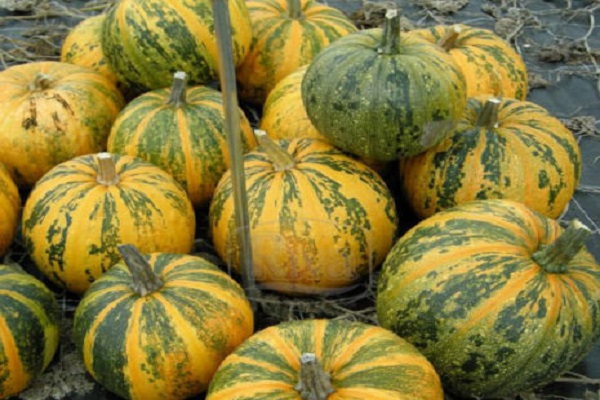
What seeds should you pay attention to?
The main varieties of gymnospermous pumpkin were created for industrial purposes and were intended for oil production. Cultures for gastronomic purposes were developed later and today are represented in many varieties. The best varieties of Golosperm pumpkin are:
- Danae - fruiting time begins after 120 days, round fruits reach a weight of 5 to 7 kg, gives a good harvest with sufficient heat.
- Apricot - the first harvest is harvested on 100-105 days, a unique dessert variety has an increased sweetness and has an apricot flavor, it was from this species that juice was made during the Soviet era.
- Altai - has an average length of a whip and an early ripening period, the fruits are bright yellow in color and reach a weight of 2.5 to 5 kg, has a moderately sweet taste of pulp with a sugar content of 6%.
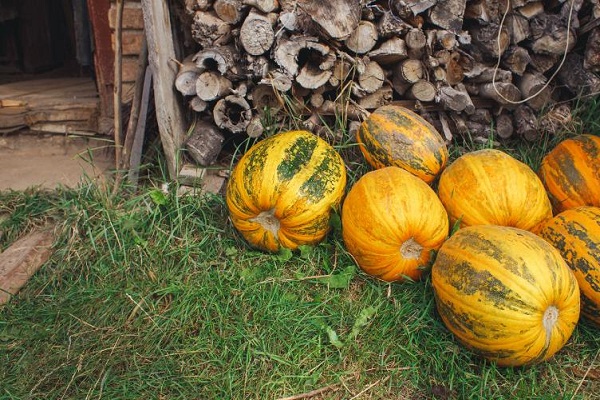
Of these varieties, seeds and pulp are suitable for consumption, which is ideal for making pumpkin juice, mashed potatoes and cereals. Vegetable pulp can be used to prepare baby food. The special qualities of vegetables allow patients to quickly recover in the postoperative period. The nutritional value and usefulness of pumpkin pulp is preserved even when the product is frozen.

